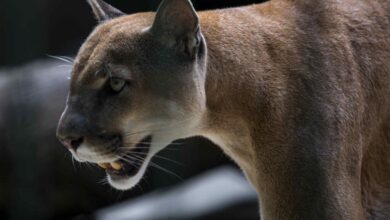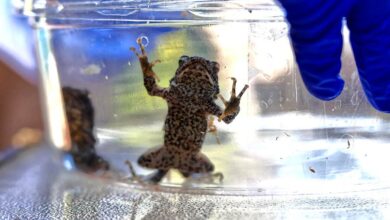Dragons Reality or Legend?
Here we tell you the origin of the dragons and how close these mythological animals are to reality.

Photo: Pexels
LatinAmerican Post | Brandon Martínez Salazar
Escucha este artículo
Leer en español: Dragones ¿realidad o leyenda?
Many think that these fantastic animals only belong to the myths and legends of the people, but to the surprise of many people they do exist in nature. They may not breathe fire from their mouths, and they are not giant beasts either, but they do resemble what has been reported in popular culture a bit.
In this article, we will take a tour of the history of these legendary animals and the species that are closest to them. Also, we will tell you about a very important discovery about the remains of an alleged dragon dinosaur that was found in Australia.
The mythological origin of dragons
To understand where these mythical animals come from, you must first understand the word that identifies them. Etymologically, the word "dragon" comes from the Greek drákōn and means "serpent". However, in ancient times this word was used to refer to real vipers, which over time ended up referring to huge snakes with special qualities.
Consequently, these beings begin to be part of the culture in different regions of the world with different perceptions. For example, in the East the figure of the dragon did not have wings, but the magical ability to fly was attributed to them. They were considered wise and generous creatures. For that reason, in Japan, they are the official symbol of the imperial family.
Now, in Europe, after the fall of the Roman Empire, the figure of the dragon became a symbol of power and wisdom. In this context they are depicted as a huge, winged serpent, while for the Germans they were associated with divinity and the underworld.
However, in South America the representation is a bit different. For the indigenous tribes of the region, it was more of a divinity that should be worshiped, as the Aztecs did. While the Muiscas interpreted them as a creator god who resembled a serpent with fire. Later, all these figures begin to be part of the fairy tales of princesses and dragons, thanks to the story of Saint George and the dragon in the Golden Legend. There, the dragon is symbolized as Satan. It narrates the struggle of a believer and the church against evil.
We recommend you read: How Was The Giant Panda Saved From Extinction?
What does science think of these mythical beings?
Science has always been in search of the real animals that gave life to these mythical beings. Today, it is known that there are species of reptiles that have been associated with the interpretation of the dragon in different regions during ancient times:
-
The Chinese alligator: Possibly, it was the inspiration of the Asians with their dragon symbol due to the relationship that this reptile has with water.
-
The Frilled Dragon: This is a small lizard that has an expandable frill that surrounds its head and neck. This flyer opens when the animal becomes alert. It is found in Australian forests.
-
Pythons: They are huge snakes that can be up to 30 feet long. They are so terrifying that they can strangle an elephant. Possibly, they are one of the origins of the dragon myth in ancient times.
-
The Komodo dragon: Its real name is Varanus komodoensis, and it is the largest reptile known to science. It can measure up to three meters long and its average weight is 70 kilograms. They are found on the islands of Indonesia and are classified as the largest predators. They may have been the inspiration for the mythical dragons of Europe.
Discovery of prehistoric dragons in Australia
In 2011, researchers from the University of Queensland, Australia, found the fossil remains of a pterosaur jaw in the northwest of the country. After the investigative analysis, the university published the anatomical results of these remains in the Journal of Vertebrate Paleontology.
According to Tim Richards, leader of the investigation, the wingspan of this animal is seven meters long and the snout is spear-shaped, classifying it as a terrifying beast. It is presumed that this creature belonged to the so-called "Dragons of the Cretaceous", a period in which the dinosaurs became extinct.
In modern times, this pterosaur has been called The Thapunngaka shawi and is possibly the closest thing to a dragon in real life. In addition, this being was made up of a one-meter skull, forty molar teeth and bones with thin walls and holes that facilitated its propulsion, according to the National Geographic Spain website.
This discovery has been fundamental to understanding the diversity of Australian pterosaurs during the Cretaceous. However, researcher Tim Richards regrets that these remains are so scarce and in poor condition, so it has been difficult to give an exact precision of the figure of this species.




